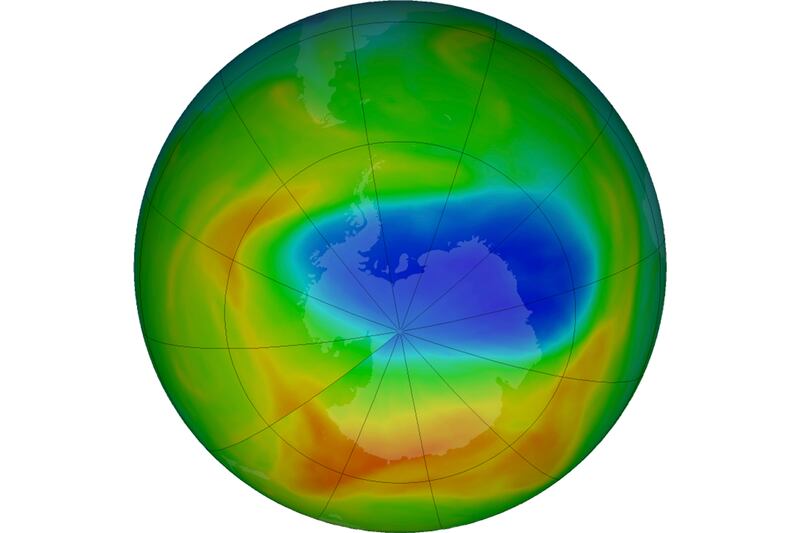The depleting ozone layer was a global concern at one point, but it slowly moved away from the spotlight.
The issue has come a long way since it was first discovered in the 1980s.
Scientists found a hole that had formed over Antarctica, indicating a depleting ozone layer caused by human activities.
It was researchers Joe Farman, Brian Gardiner and Jonathan Shanklin who reported in 1985 the “unanticipated and large decreases in stratospheric ozone levels over the Antarctic stations of Halley and Faraday,” per Nature.
Human-made chemicals — especially chlorofluorocarbons, often used in air conditioning and refrigerators — were a key reason behind the depletion. These chemicals break down ozone molecules by stripping oxygen atoms, making the layer itself unstable, according to Discover Magazine.
The ozone itself is highly reactive and is made up of three oxygen atoms. It exists mostly in the Earth’s stratosphere and is poisonous to humans.
“Without ozone, the sun’s intense UV radiation would sterilize the Earth’s surface,” a NASA publication stated. “With a weakening of this shield, more intense UV-B and UV-A radiation exposure at the surface would lead to quicker sunburns, skin cancer and even reduced crop yields in plants.”
The reason why the ozone layer isn’t in a dire state anymore is that solutions were put in place.
The 1987 Montreal Protocol, for one, was adopted to regulate the CFCs. According to Reuters, it is the only United Nations treaty to get support from every country on Earth.
Without the treaty, ozone depletion would have increased tenfold by 2050, alongside a growing number of diseases related to the eyes and skin, the United Nations website states.
The work hasn’t ended and the list of chemicals keeps growing. In 2016, hydrofluorocarbons were also classified as a controlled substance. Meanwhile, the concentration of CFCs did not come down as quickly, hinting that the chemicals were still being used.
These undeclared emissions were traced back to China, according to BBC News.
Volcanic eruptions, wildfires and other natural disasters can also fuel the problem. With that said, the ozone is still healing and will take decades to fully recover.


